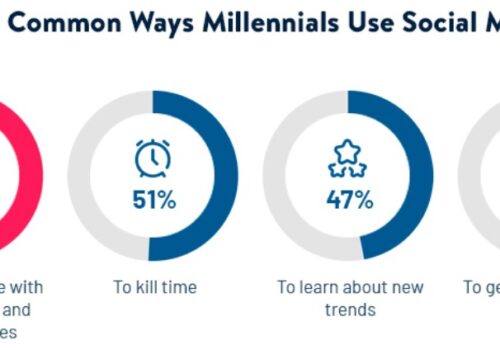Learning from the failure percentage of startups teaches us important lessons. Many startups don’t make it, but their journeys offer valuable insights.
First, understanding your market and customers is crucial. If you don’t, you might create something that people don’t need. Second, managing money wisely is key.
Running out of cash can end your business quickly. Also, having a strong team and being able to adapt to changes is important.
These lessons help new entrepreneurs avoid common pitfalls and increase their chances of success in the competitive world of startups.
| Statistic | Detail |
|---|---|
| Overall Startup Failure Rate | 90% |
| Failure Within the First Year | 10% |
| Surviving Startups by End of First Year | 80% |
| Failure Within Five Years | 50% |
| Failure Within Ten Years | 65% |
| Top Reason for Failure | Misreading market demand (42%) |
| Second Top Reason for Failure | Running out of funding/personal money (29%) |
| Lack of Product-Market Fit | Contributes to 34% of failures |
| Poor Marketing Strategy | Leads to 22% of failures |
| Profitability | Only 2 in 5 startups are profitable |
Why Do Most Startups Fail?
Source: Pexels
Startups are typically tiny and adaptable, and they can take many different forms. Some startups focus solely on the end-user market, while others offer products or services to other enterprises.
The most prevalent cause of startup failure is a lack of capital. There are numerous reasons why a startup may not have sufficient funds to continue operations.
The most prevalent reason is that the business concept was never successful and could never generate sufficient money to cover its expenses.
A business may also run out of money if it is unable to raise sufficient funding from investors, which might occur if the investors lack confidence in the startup.
The following are some of the most common reasons:
- Lack of funds
- Poor market research
- Failure to pivot as required in reaction to market changes
- absence of a viable business concept
- Inability to expand operations as required due to insufficient money
Startup Success Rates & Growth
Let us now discuss startup success rates and growth after discussing the industry’s failure rate.
Source: Pexels
- The US Census Bureau reports that the mining industry has the highest five-year survival rate for new enterprises, at 51.3%.
- The likelihood of success for business owners who have previously managed profitable enterprises is 30%.
- 82% of successful business owners acknowledge they have the qualifications and experience to run a company on a tight budget.
- Due to the fact that 14% of companies fail as a result of ignoring customers’ wants, it is essential to assist your clients.
- With $36.3 billion in revenue, healthcare startups are the largest industry in the United States.
- 90% of startups fail, a consistent statistic across various analyses underscoring the high risk associated with launching a new business.
- 10% of startups fail within the first year, highlighting the immediate challenges new businesses face in establishing themselves.
- By the end of the first year, 80% of startups remain, indicating a significant survival rate initially, but this number decreases over time.
- Within five years, 50% of startups close down, and within ten years, the failure rate increases to 65%, showing the long-term challenges in sustaining a business.
- Misreading market demand is the top reason for startup failures, cited in 42% of cases, pointing to the importance of understanding market needs.
- Running out of funding and personal money is the second most common reason for failure, affecting 29% of startups, which emphasizes the critical role of financial management and planning.
- A lack of product-market fit contributes to 34% of startup failures, suggesting that many startups struggle to offer products or services that meet market needs effectively.
- Poor marketing strategy leads to the downfall of 22% of startups, indicating that reaching and engaging the target audience is a significant hurdle for many new businesses.
- Weak founding teams and being outcompeted are also notable reasons for startup failures, highlighting the importance of a strong team and competitive strategy.
- Only 2 in 5 startups are profitable, and startups often struggle with cash flow, making financial management a critical challenge.
- The highest five-year survival rate for new businesses is in the mining sector, at 51.3%, indicating that success rates can vary significantly by industry.
- 82% of successful business owners admit that their qualifications and experience are crucial in running a company.
- Startups in the technology industry have the highest failure rate due to the competitive and rapidly evolving nature of the sector.
- Around 30% of startups with venture capital backing fail due to the high-risk nature of early-stage investment.
What Lessons Can New Startups Learn From Previous Failures?
Startups are risky and fail frequently. No one can foretell what will occur in the future, but everyone may gain success by learning from the past.
Here are a few lessons from the failures of other startups that will help you avoid making the same mistakes.
1. Market Understanding:
Many startups fail because they underestimate the importance of thoroughly understanding their target market.
It’s essential to conduct comprehensive market research to identify the size of the market, the needs and pain points of potential customers, and the competitive landscape.
Without a clear understanding of the market, startups risk developing products or services that don’t resonate with customers or address their real needs.
2. Problem-Solution Fit:
Startups often fail when they build solutions without a clear understanding of the problems they’re trying to solve. To succeed, startups must focus on identifying genuine pain points or problems faced by their target customers.
By ensuring a strong fit between the problem and the solution, startups can increase the likelihood of creating products or services that meet real customer needs and provide value.
3. Validation:
Validating ideas and assumptions early in the startup journey is crucial for mitigating risk and increasing the chances of success.
Lean startup methodologies advocate for building Minimum Viable Products (MVPs) or prototypes to test hypotheses and gather feedback from real users.
By obtaining early feedback, startups can identify potential flaws in their ideas, refine their offerings, and make informed decisions about the direction of their business.
4. Financial Management:
Poor financial management is a common reason for startup failure. Startups must establish robust financial practices, including monitoring cash flow, budgeting effectively, and managing expenses wisely.
By maintaining financial discipline and planning for different scenarios, startups can better navigate the challenges of the startup journey and improve their chances of survival.
5. Team Building and Adaptability:
Building a strong, cohesive team with diverse skills and a shared vision is essential for startup success. Startups should prioritize hiring talented individuals who bring complementary expertise to the team.
Additionally, startups must be adaptable and willing to pivot their strategies based on market feedback, changing circumstances, or new opportunities.
By fostering a culture of adaptability and collaboration, startups can respond effectively to challenges and capitalize on emerging trends.
FAQs
📉 Why do so many startups fail?
Many startups fail due to a combination of factors including lack of market need, running out of cash, poor product, weak business model, and intense competition.
💡 What industry has the highest startup failure rate?
The tech industry has one of the highest startup failure rates, with about 90% of tech startups failing.
🚀 How can startups reduce their chances of failing?
Startups can reduce their failure risk by thoroughly researching their market, managing finances wisely, and being flexible to pivot their business model as needed.
📊 Are there any industries where startups are more likely to succeed?
While no industry guarantees success, professional, scientific, and technical services sectors show relatively lower failure rates, suggesting a bit more stability.
🤔 What's the most common reason for startup failures?
The most common reason for startup failure is creating a product or service that does not meet a strong market need.
📈 What percentage of startups fail within the first year?
On average, about 20% of startups fail within their first year across various industries.
Quick Links:
- How Many People Use 1password? (Usage Stats)
- How Many People Use Yahoo Mail? (User Stats)
- Procrastination Stats
- Logo Statistics
- Video Marketing Stats
- TikTok Statistics
- E-Learning Stats
Conclusion: Failure Percentage Of Startups 2025?
The failure rate of startups is quite high, with tech startups facing the toughest odds at 90%. Other industries like fashion and food also see many startups fail but for different reasons like lack of resources or too much competition.
Learning from these failures is crucial. Whether it’s due to a bad product, a weak business model, or not understanding customer needs, each failure teaches important lessons.
Knowing these challenges can help new startups plan better and increase their chances of success in the competitive business world.
If you are a startup or have already launched your business, try to learn from other’s errors.







